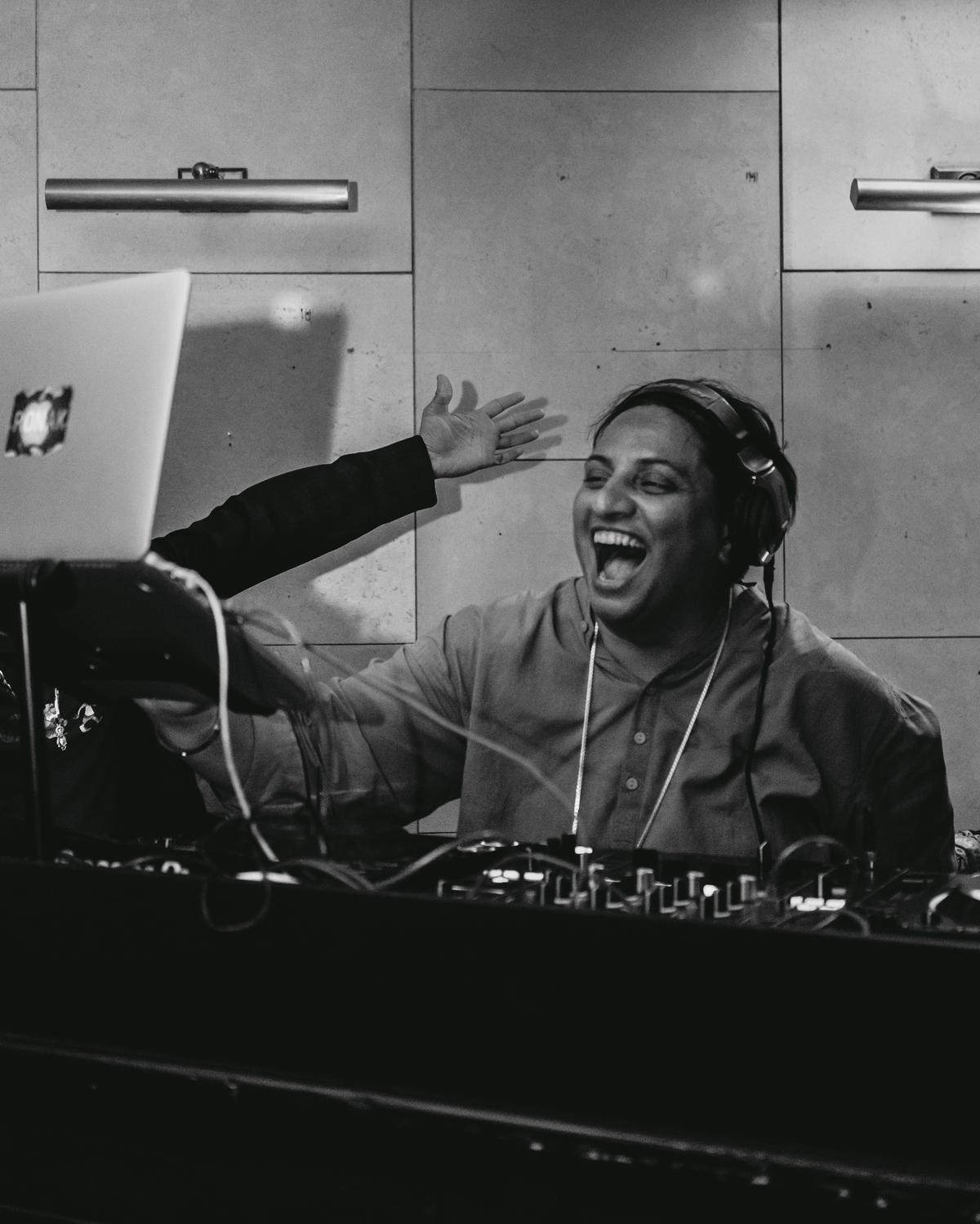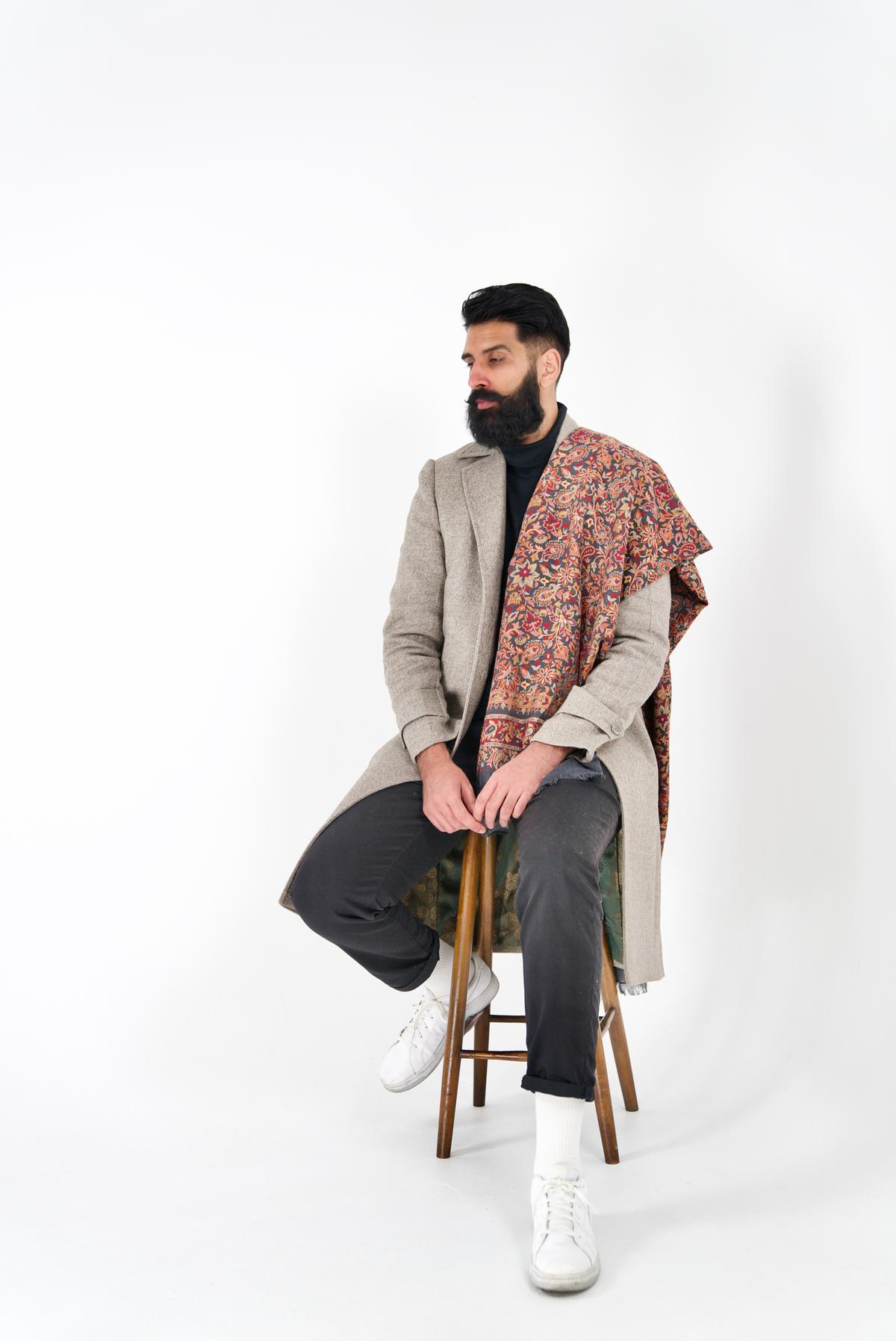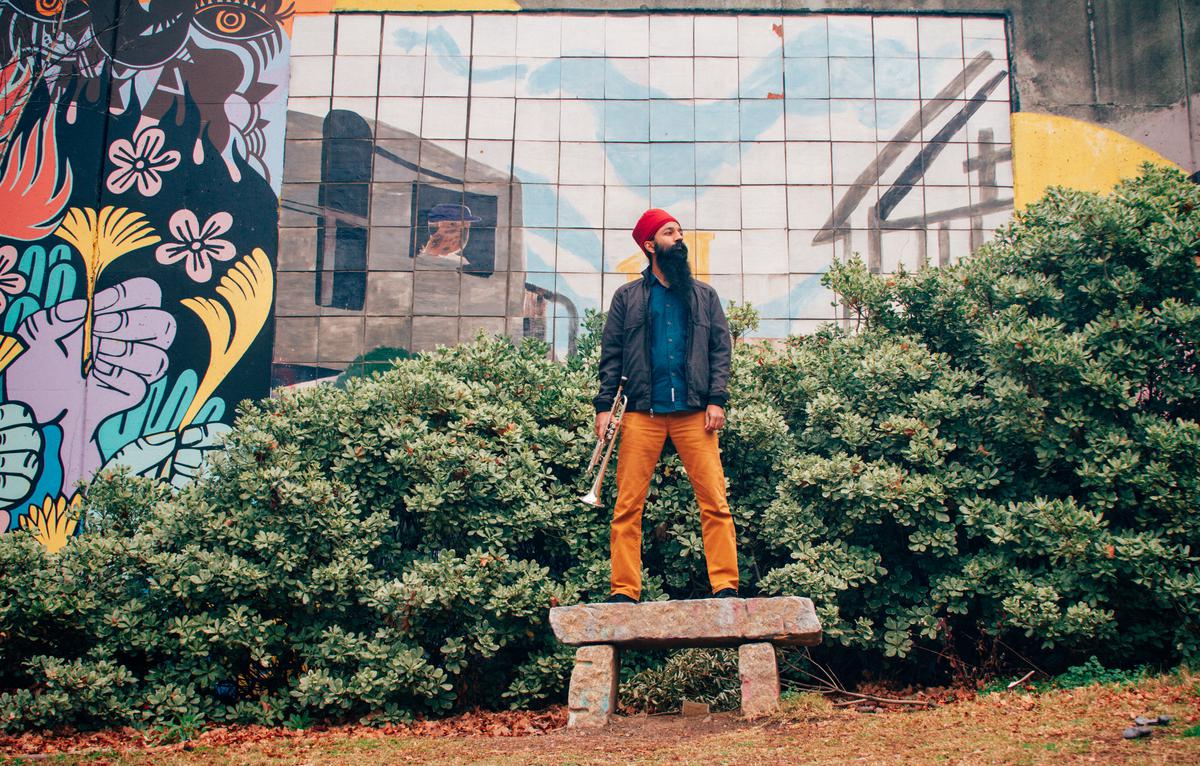There’s a renaissance of sorts in the industry. With music production going digital and getting easier to access, a growing number of artists is experimenting with genres ranging from electro-pop to lo-fi, and penning songs on queerism, the lost land of Puadh, cultural intolerance
There’s a renaissance of sorts in the industry. With music production going digital and getting easier to access, a growing number of artists is experimenting with genres ranging from electro-pop to lo-fi, and penning songs on queerism, the lost land of Puadh, cultural intolerance
It is nearly midnight when Talwiinder takes the stage for his first gig at a glitzy night club, Episodes by Kala Ghoda, in Chandigarh. As the first beat drops, the jam-packed venue swoons to a new sound of Punjabi music, one which is peppered with experimental electro-pop and trap music, with lyrics that break away from the mainstream rhetoric of sexism, caste supremacy and gun culture.
The music stands out from the dhol and tumbi of bhangra tracks and so does Talwiinder’s appearance. The 27-year-old California-based singer-songwriter’s face resembles the Joker’s with the paint, but it has a corporate twist as he wears a white-collared shirt with black tie and trousers. “I want to do something that no one is doing. Everybody’s showing their face, everybody is looking good, clean. Bro, make the music clean. You’re selling yourself, not the music,” he says a day later, at the terraced roof of his hotel.
Talwiinder, who has hits like ‘Gaah’, ‘Gallan Char’ and ‘Dil Te Dimag’ under his belt, is among artists who are defining new-age Punjabi music, which expands on global music but whose lyrics are rooted in the linguistic heritage of Punjab. This genre traverses through Siddhant Soni’s poignant rap about queer activism, Sonny Singh’s trumpet-infused renditions of Sikh kirtans, gurbanis and Gadhar poetry, and Kiran Aluwalia’s folk songs, ballads and ghazals.
Siddhant Soni
In July, one of Siddhant’s songs called ‘ Kalla Killah’ , was re-released by Saregama Fresh during pride month. It was earlier released on YouTube channel J Block, a Delhi-based music collective with which Siddhant got associated some six months ago. He said when the label approached him, he ensured the song was made by an all-queer team. At 27, Siddhant does not want to box his music or his sexual orientation. “I want my music to be massy. I specifically wanted to write in Punjabi because I was sick and tired of what is happening. When I read Amrita Pritam, Shiv Kumar Batalvi or Paash’s poems, I feel there’s so much more to Punjabi than all this misogyny and patriarchy,” he says.
Based in Delhi, he traces his roots to Rajasthan’s Hanumangarh where he grew up with Punjabi-speaking Muslims, Sindhis, Hindus and Sikhs. His influences swing between Lal Chand Yamla Jatt, Surinder Kaur, Alam Lohar, Attaullah Khan and Naseebo Lal.
Through his music, Siddhant addresses words that are targeted at shaming and harassing LGBTQ+ community. “The words that I say in my songs, like ‘Bandeya’, are what we listen to every day. The comments on my social media are testimony to it. Maybe if I rapped in English or Hindi, I would not be able to reach the kind of audience I want to talk to,” he says.
For Brooklyn-based Sonny Singh, 42, the lyrical (and sometimes musical) content of Punjabi pop music is a caricature of itself. “I find it boring, but also kind of sad,” he says. In late 2018 and early 2019, Sonny was feeling pulled down by the growing wave of authoritarianism around the world. “I found myself revisiting some shabads [Sikh hymns] I learnt as a child. I started making videos on Instagram, explaining the lyrics and connecting them to present times. I eventually reached out to my friend Wil-Dog Abers, bassist of the Grammy-winning band Ozomatli from LA, to see if he might want to produce an album for/with me. He loved the idea, and the album was a creative collaboration. We brought together over 20 of our musician friends, so it was a community effort.” The album Chardi Kala was released in May this year.
The first wave of change in Punjabi music came in the late 1990s, when artists from the Punjabi disapora in the UK, Canada, and the US began to create music. It eventually gave way to tracks like ‘ Mundeyan Toh Back Ke’ by Punjabi MC and ‘ Power of Bhangra’ by SNAP.
New York-based music producer DJ Rekha Malhotra, who launched Basement Bhangra in New York in 1997, says, “In the UK, during the peak of UK Bhangra, there were many labels like Oriental Star Agency, Moviebox, Nachural Records, and Multitone. Now the number has dwindled, but a lot of artists are putting out their own releases, like Panjabi MC and AP Dhillon.”

DJ Rekha
Rekha is producing Basement Bhangra’s 25th Birthday Bash at Central Park Summer Stage on August 6 with singer Jasmine Sandlas and will be launching a new podcast in 2023. She is the executive producer of an album by Ganavya Doriaswamy, based on the poetry from Fariha Roisin’s book How to Cure a Ghost, which will feature tracks with guest vocals from Priya Darshani, Ali Sethi, Raveena and more.
In the early 1990s, she saw the emergence of DJs in the Indian community. On June 26, 1992, her record label Sangam Sounds worked its first set as the DJ crew for a birthday party at Bombay Harbor restaurant in New Hyde Park, New York. “Our DJ setup comprised two consumer CD players, including one that I pulled out of my parent’s hi-fi rack system, a Radio Shack Public Address System mixer, a tape deck, a receiver (also from my parents’ hi-fi rack system), and a set of low-quality carpeted DJ speakers. We had only 15 CDs, which caused us to repeat several key tracks—a DJ no-no. In our inexperience with the technology, we did not account for the receiver, which was powering the speakers, overheating. This necessitated borrowing a fan from a college classmate who lived close by. We made $51 that night,” she recalls.
Digital revolution
Rahul Balyan, head of music at Spotify India, says Punjabi language has seen a huge growth on Spotify in terms of daily listeners, total songs streamed, as well as growth in artist followers on the platform.
Top 5 on Spotify
Most-listened-to Punjabi singers
Sidhu Moose Wala
AP Dhillon
Karan Aujla
Harrdy Sandhu
Arjan Dhillon
Most-listened-to Punjabi songs
No love, by Shubh
295, by Sidhu Moosewala
Excuses, by AP Dhillon
The Last Ride, by Sidhu Moosewala
We Rollin, by Shubh
Most-streamed musicians in India
Arijit Singh
Sidhu Moosewala
Anirudh Ravichander
Pritam
Shreya Ghoshal
“Punjabi is now amongst the top five languages streamed in India. Our flagship Punjabi playlist, ‘Punjabi 101’, has become quite popular with consumers too. We have been able to take a lot of artists to global consumers in Canada, UK, US and Australia, and have even done global campaigns in a few overseas markets,” he says.
The digitisation of music, opines Talwiinder, has democratised its dissemination. “When American rapper Ras, in his interviews, says ‘you don’t need nobody; there are no gatekeepers’, he’s right. You can now upload your music on DistroKid, CD Baby and within a week, your song will be on Spotify, Apple Music, anywhere. You don’t need music labels,” he says.
To Talwiinder, the reckoning came after waiting for a response from big labels for four-six months. He was then working at JP Morgan and had invested his savings in marketing on Instagram and Facebook ads to take his music to the people. “Distribution companies do everything for you for a yearly fee. You send them the file, upload a picture as cover art. Every artist has a chance to put everything everywhere. I was doing Instagram ads, so people could listen to me for 15 seconds, and swipe up to go to my YouTube if they wanted to listen to the rest. Those were real people going to the YouTube, so YouTube algorithm comes in handy as well.”
Kiran Ahluwalia
In 2000, Canada-based Kiran Ahluwalia, whose influences range from Western and Indian music to the African blues, recorded her first commercial album and has now started recording her eighth.
She has belted out over 14 Punjabi songs, some of which are folk ( Dil, Koka, Jhanjra), ballads ( Rab Da Roop), qawwali ( Mustt Mustt, Jaag na Jaag) and ghazals ( Kina Nere, Raqba). “These days, no one wants to pay for music anymore, so musicians (at least here in the US) don’t make any money selling their music. They only make money from performances and sync (putting music in films). Big platforms like Coke Studio help popularise an artist and a song, so they’re important that way,” she says.
This year, Ahluwalia featured on Tiny Desk (Home) Concert. She has mostly been on smaller world music labels. Punjabi music videos focusing on girls and cars put her off. “I find that odd and uninteresting,” she says.
Her upcoming songs are about cultural intolerance. “I’m troubled by the loss of brotherhood/sisterhood amongst us and the loss of humanity,” she says.
The way forward

KRU172
Soon after Independence, 28 villages on the foothills of the Shivalik range were razed to make way for Chandigarh, the present-day twin capital of Punjab and Haryana. This episode and later the trifurcation of Punjab into Haryana and Himachal Pradesh, dealt a body blow to a region of Punjab and a dialect of Punjabi — Puadh and Puadhi. Kru 172, comprising brothers Navdeep Singh and Harsimran Jit Singh, is a rapping duo from Chandigarh. It takes the numbers in their name from the city’s STD code and are trying to revive the fast-fading Puadhi dialect through their songs.
They have been lucky as far as labels go. Apart from releasing songs on Zee Music and much recently on FoundOut Records (a sub-label of Universal Music India), Kru 172 claim to have produced songs for artists who have been signed by T-Series, Speed Records, and White Hill Music.
“With labels, you get a wider reach because they have a larger network and way more resources as compared to an indie artist, but one also loses the creative freedom. Our goal is to establish ourselves as independent artists,” says Navdeep (34).
Their second album, Chandigarh’s Hottest Duo, inspired by old skool boom bap and the ’90s west coast sound, features an intro track in Puadhi dialect. “We were born in a family of small-scale farmers, right here in Chandigarh. For the longest time, we didn’t know that we are natives to this land. In addition to Majha, Malwa and Doaba, Punjab’s fourth region Puadh, spans across Punjab, Haryana and Himachal. Chandigarh was built on the land of Puadhi people. Our village was one of the 28 which were razed to the ground for the city. Most Puadhi people (including ourselves at a point of time) feel ashamed to talk in their native tongue, because we feel it is inferior to other dialects. We wanted to change that perception. The Intro is a real story. That’s my grandfather’s brother talking about our village that used to exist here before the government took the land to build the new capital for Punjab,” he shares.

Kidjaywest
Rappers like Prabh Deep and Kidjaywest are also experimenting with new sounds. Kidjaywest aka Harry Sandhu, who has collaborated with Talwiinder on several tracks, says technology and social media have made fame a more democratic process. “I think a living example of this is Talwiinder. He has been able to grow a following through his music all over India, independently, without ever showing his face. The few shows he has done so far have been sold out. Prabh Deep is another example of an artist who isn’t scared to push the boundaries when it comes to experiments with sound,” says the 30-year-old.
For Sydney-based Kidjaywest, Punjabi hip-hop and rap is still in its infancy. “In five years, we will see a lot more range coming through subgenres of lo-fi and boom bap rap. You will see artists talking about a multitude of topics, be it romance or racism. That’s the beauty of hip-hop: variety.”

























